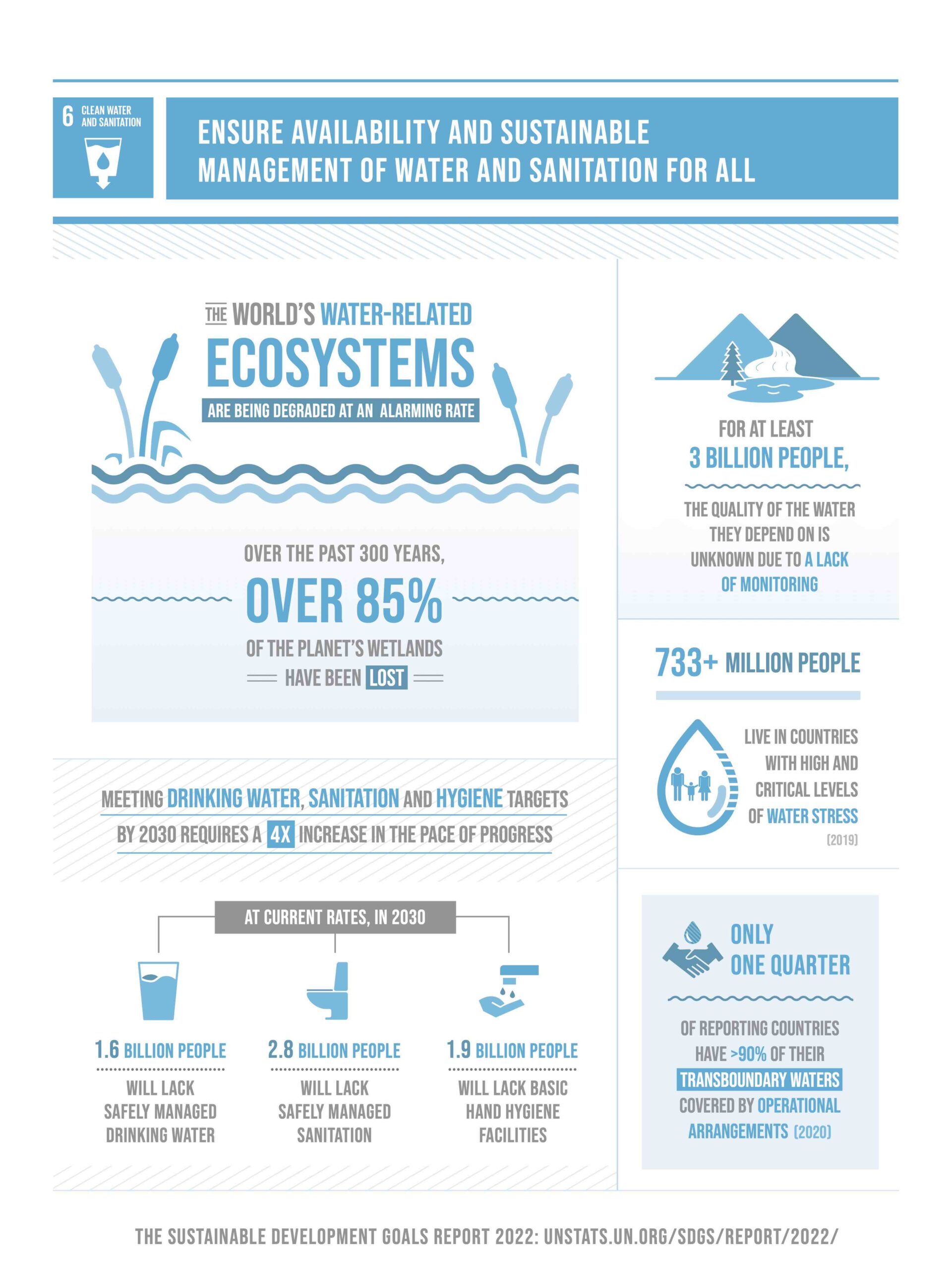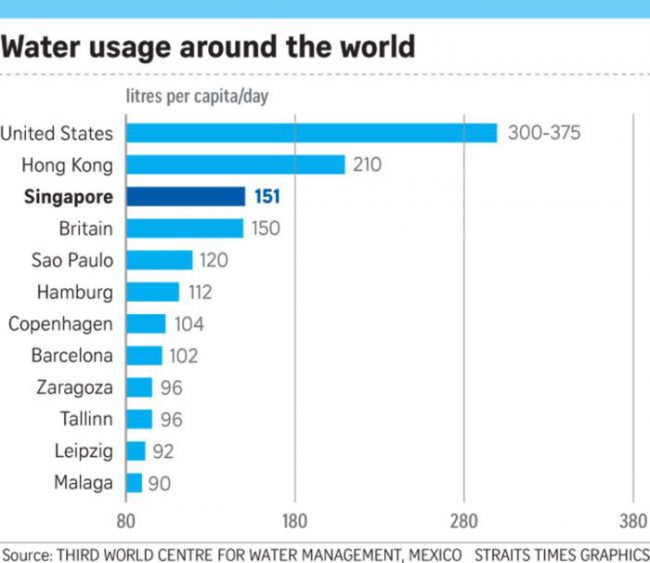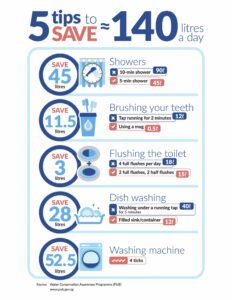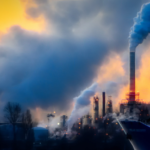Published 27 May 2023 ● Last Updated on 27 May 2023
If you are reading this article, chances are you live in an urban city with access to water in your taps 24/7. But that’s not the case for a big percentage of the world population, many of whom walk long distances to fetch potable water, or are forced to rely on unsafe sources.
Whither water? Earth may be the ‘blue planet’, with 75% of its surface covered with water. But only 3% is freshwater, most of which is locked in icecaps and glaciers, and some of it, increasingly polluted. All (dis)counted, only 0.4% of the earth’s water is usable and drinkable to be shared among its 7 billion people.
This sharing is far from equitable. An estimated 2 billion people live without safely managed drinking water services, including 1.2 billion people lacking even a basic level of service, according to the United Nations (UN), as per 2020 statistics. The challenges from extreme weather, climate change and growing population are factors creating additional water stress. Recognising that access to safe water, sanitation and hygiene is a basic human need for healthy living, ‘Clean Water and Sanitation’ is enshrined as one of the 17 Sustainable Development Goals. It is far from being achieved.

Globally, the largest user of freshwater is the agricultural sector – accounting for 70% of water withdrawal per year – followed by the industrial sector at 17%. As for the most visible use of freshwater – drinking, washing, cleaning, cooking – all the use for households and public services accounts for 11%. In other words, our choice of food and consumption of materials, not merely the water we use at home, determines our water footprint. Affluent countries use up a disproportionate amount of water in both ways.

In contrast, it is people living in developing countries across the globe who typically experience severe water shortage and contamination. 8 out of 10 people who lack even basic drinking water live in rural areas, and about half of them live in least developed countries. Women and girls, relegated to the lowest of hierarchies, spend 200 million hours walking to collect water for their families.
How can you add your drop to this conservation pool?
It may be hard to visualise how taking a shorter shower can reduce the load on women queuing to collect clean rationed water in a slum at 4 am, but there is no doubt that water is the most precious, finite, and under-priced resource. By using water judiciously, we reduce the load on the infrastructure it takes to clean and transport potable water. In limiting the withdrawal of water from nature, we are conserving water table levels, and sparing habitats from destruction.
15 tips to conserve water on an everyday basis
- Mind your bath time! 30% of waste usage in a Singapore household takes place in the shower – so keep it quick. Collect any waiting-for-hot-water spill in a bucket to use for other household work such as gardening or washing. Buckets are the most efficient, and bathtubs the most wasteful ways to bathe.
- Use a mug of water while brushing your teeth or at the very least turn the tap off. This one act will help you save 11.5 litres of water per instance.
- Use a mug of water or fill the sink with a few inches of water while shaving. This will rinse your razor just as well as running water, with far less waste of water.
- When washing fruits and vegetables, soak and rinse in a container instead of running the tap. The leftover water can be used for gardening.
- Fix those leaks! If your flush press is stuck, or your pipes need a fix – your oversight could be adding up to a huge bill
- Use water-efficient appliances at home. Singapore has a system of labelling these products to help consumers identify those that are more efficient. The rule is really simple: more ticks means higher efficiency.
- When running a washing machine or dishwasher, run only on full loads.
- Opt for a dishwasher over handwashing your dishes. A dishwasher uses about 9 to 12 gallons of water while hand washing can consume up to 20 gallons.
- Use a half flush when appropriate. A full flush toilet uses about 11 litres per flush compared to a dual flush toilet which can reduce each full flush to 4.5 litres and each half flush to 3 litres.
- When washing synthetic clothes like fleece jackets etc, add a microfiber bag to your laundry. This helps in collecting shed fibers and ensures the waste water is not contaminated. Synthetic textiles send tiny plastic fibres into wastewater and these eventually make their way into rivers, lakes, and oceans where they pose health threats to marine life, plants, and animals.
- Consider going vegan even if it’s for only a few days a week. The livestock and poultry industries are water guzzlers. The total amount of water needed – to produce one pound of beef is 1,800 gallons, one pound of pork takes 718 gallons, and a pound of chicken requires 576 gallons. In comparison, the water footprint of soybeans is only 206 gallons, corn 108 gallons and wheat 132 gallons
- Buy Less! Consumer products including clothes are water intensive. It takes 2,720 litres of water to make just one cotton T-shirt — as much as a single person would drink over three years.
- Use eco-friendly cleaning agents, be it for the shower or the floors. Chemicals in cleaning agents find their way into water bodies and have adverse effects on aquatic life. Phosphates in laundry and dishwasher detergent have a fertilising effect, triggering the widespread growth of algae that saps away the water’s oxygen, reducing biodiversity.
- Throw cigarette butts in the trash, NEVER on the ground. Cigarette butts are the most littered item in the world, often finding their way through storm drains into the sea. Their plastic fibers leach toxic chemicals and persist in the environment and oceans.
- BYO water bottle everywhere you go. Use it to avoid buying plastic bottled water – and to fill up any excess water you are served!

Water is a life giving elixir not just to us humans but to the plants and animals as well. How we use water and how we conserve it will impact our collective future.
Featured image: Unsplash via Yoann Boyer
Related links
The big thaw| Reasons behind glacial melting and what it means for life on earth
Best out of waste| Plastic-busting initiatives keeping our oceans clean



0 Comments